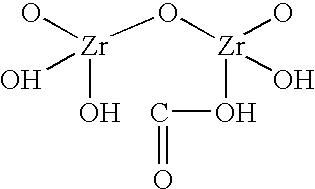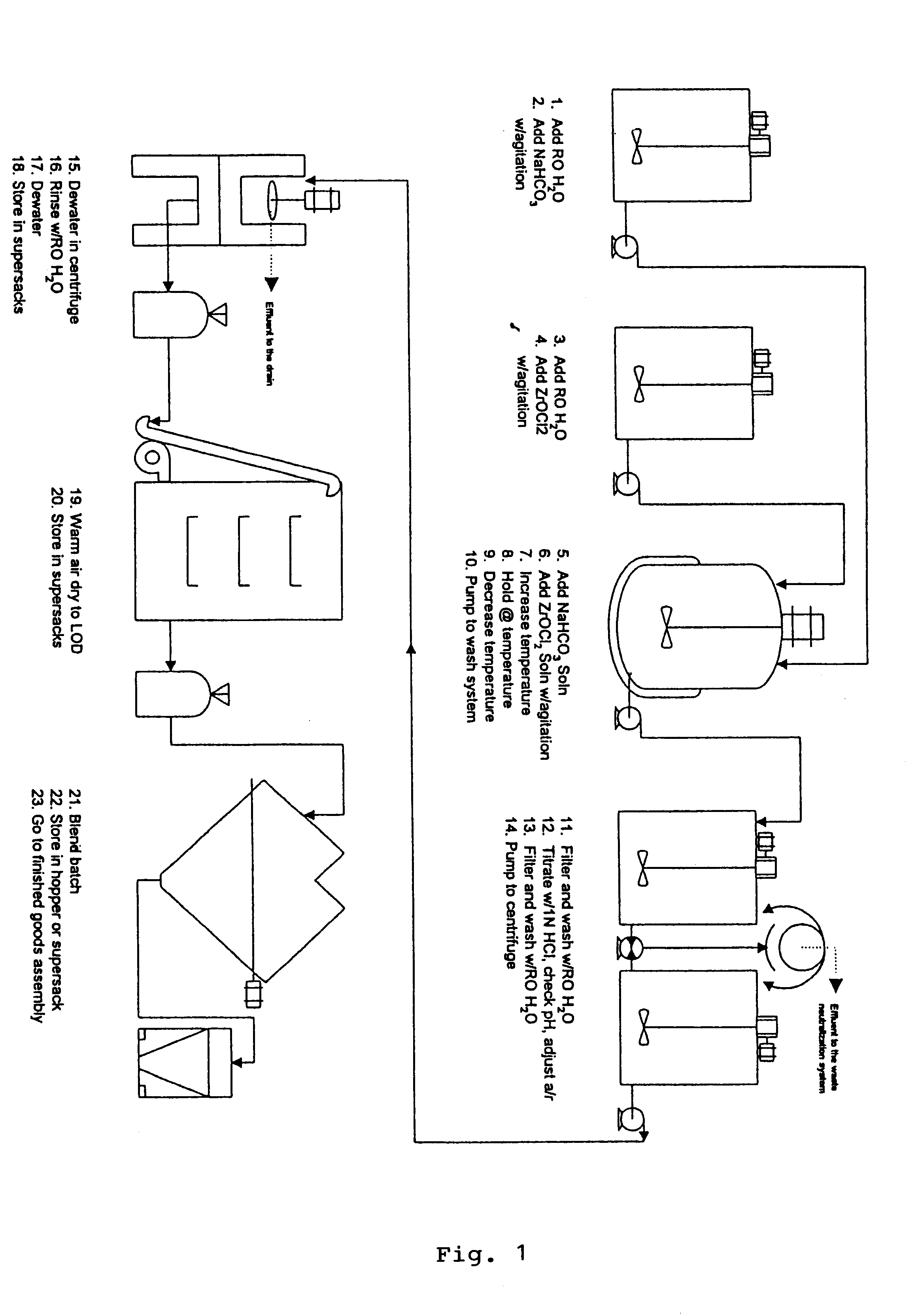Sodium zirconium carbonate and zirconium basic carbonate and methods of making the same
a technology of zirconium carbonate and basic carbonate, which is applied in the field of making the same, can solve the problems of degrading the quality of the material as a sorbent, and cannot be used, and achieves the effect of improving the quality of the produ
- Summary
- Abstract
- Description
- Claims
- Application Information
AI Technical Summary
Benefits of technology
Problems solved by technology
Method used
Image
Examples
example 1
789 gm soda ash was dissolved in 3 liters deionized water. With agitation, 610 gm ZrOCl2 powder was discharged into the soda ash solution. Agitation was continued until the solid was completely dissolved to form a metastable solution. The metastable solution was slowly heated up at the rate 6-10.degree. F. per 10 minutes until the boiling or superheating temperature (under pressure) was reached. The heating was continued at the equilibration temperature for 1.5-2 hours. SZC particles started to form at about 150.degree. F. and continued to grow to 30-50 microns in particle size during the equilibration. Slow agitation was used to obtain better particle growth. The product slurry was then cooled to about 120.degree. F. after heating. The granular SZC was filtered off and the filter cake was washed with deionized water to remove the sodium chloride and excess carbonate. The yield of SZC wet cake was 862 gm and the ZrO2% recovery from the metastable solution was found to be 95%.
The SZC...
example 2
Synthesis of ZrP From Zirconium Oxychloride
The washed filter cake of SZC obtained in Example 1 was transferred to 500 ml of 10% NaOH with agitation. The alkali treatment was continued for half an hour. Then the material was filtered and washed briefly with deionized water. The filter cake was transferred to 1 liter of deionized water in the reactor. The slurry was heated up to about 185.degree. F. 1200 gm of 1:1 diluted phosphoric acid (600 gm 76% H.sub.3 PO.sub.4 mixed with equal volume of water) was slowly added to the heated slurry until the addition was complete. Heating was then continued at 190.degree.-195.degree. F. for 1 hour. The product slurry was then cooled to 150.degree. F., filtered, and washed with deionized water to remove excessive phosphate. The acid ZrP thus obtained was then titrated to pH 5.75 in 500 ml deionized water with 50% NaOH. The titrated ZrP was then filtered and rinsed with deionized water to remove leachable Na.sup.+ until the Total Dissolved Solid in...
PUM
| Property | Measurement | Unit |
|---|---|---|
| temperature | aaaaa | aaaaa |
| particle size | aaaaa | aaaaa |
| wt % | aaaaa | aaaaa |
Abstract
Description
Claims
Application Information
 Login to View More
Login to View More - R&D
- Intellectual Property
- Life Sciences
- Materials
- Tech Scout
- Unparalleled Data Quality
- Higher Quality Content
- 60% Fewer Hallucinations
Browse by: Latest US Patents, China's latest patents, Technical Efficacy Thesaurus, Application Domain, Technology Topic, Popular Technical Reports.
© 2025 PatSnap. All rights reserved.Legal|Privacy policy|Modern Slavery Act Transparency Statement|Sitemap|About US| Contact US: help@patsnap.com



